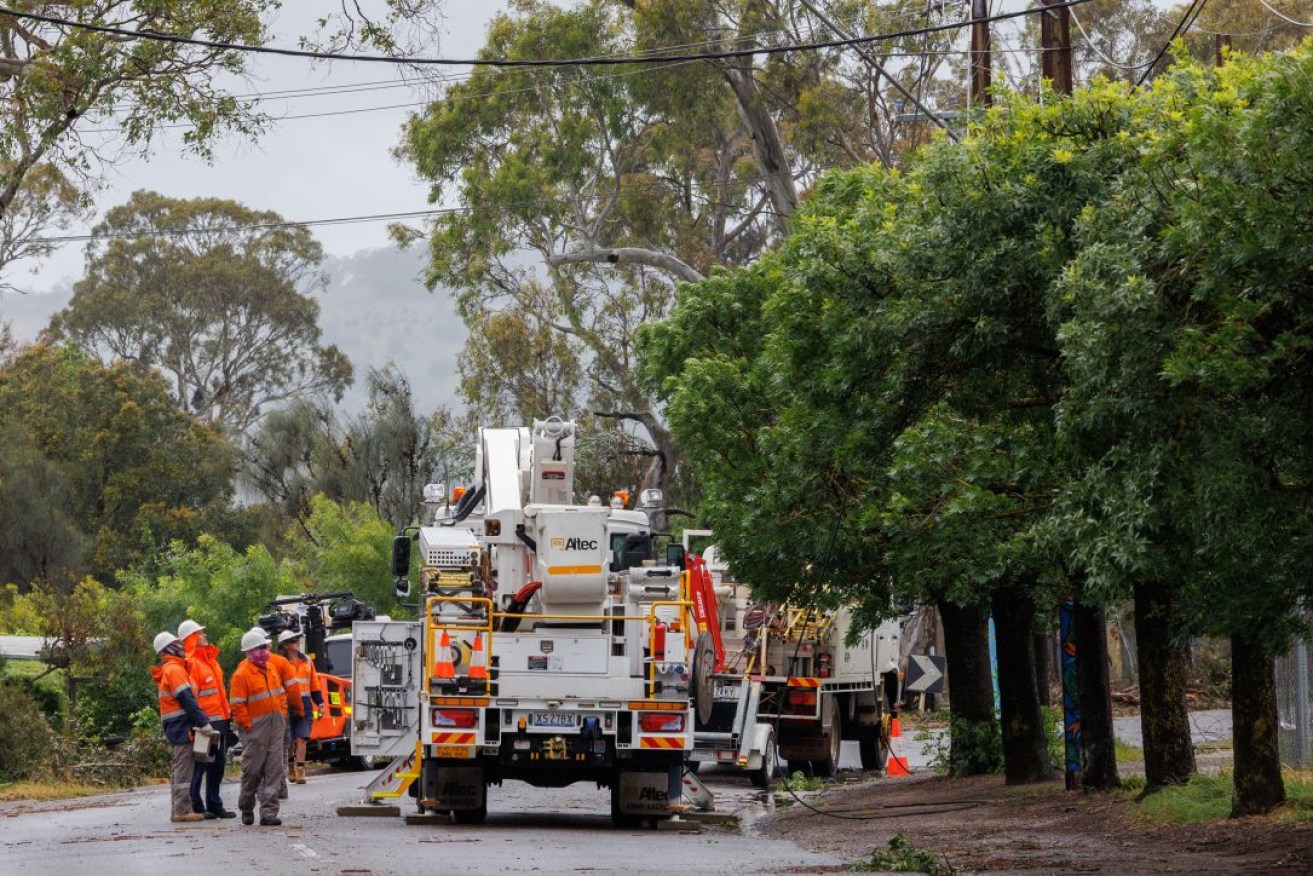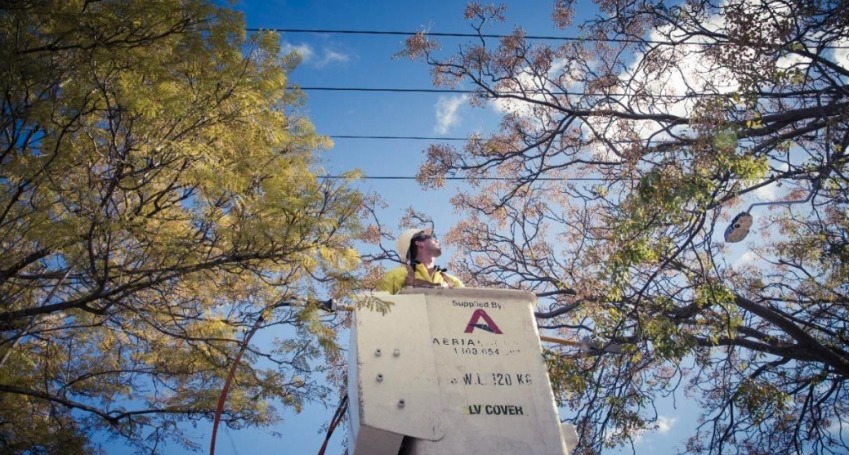Let’s not understate the cost of undergrounding powerlines
Residents and councils alike object to a continual campaign of street tree pruning near powerlines across the state, with increased demands for undergrounding. SA Power Networks’ Paul Roberts argues that it’s not a realistic option.

An SA Power Networks crew attends to downed power lines on a suburban street. Photo: Tony Lewis/InDaily
SA Power Networks appreciates the willingness of InDaily to fairly tackle the issues around balancing the need for cost-effective, safe, and reliable electricity supply with the challenge of greening our city.
This challenge of co-existence of powerlines and trees has received a lot of the attention but is only one issue (and we believe not the main one) for consideration in the greening challenge. For example, pressure for the limited space still available in public land is considerable and we are losing significant tree canopy due to urban infill developments.
SA Power Networks strongly supports more greening and we have suggested that it needs to be done smartly – if we put the right tree in the right place, we can have more canopy and we can avoid unnecessary trimming of trees around powerlines and the flow-on year-on-year costs for electricity consumers.
That just makes sense.
While we underground all new subdivisions (at the developer’s cost), about 80% of South Australia’s massive electricity network – which covers a route length of 88,000 kilometres – is above ground.
Overhead powerlines are cheaper to maintain and when there is a fault, power can be more quickly restored when compared with underground lines.

Photo: SA Power Networks
Undergrounding is the most expensive way in which we could contribute to our greening challenge.
We note many people suggest it is not in our financial interest to underground, when in fact it would significantly increase our revenue.
Through extensive consultation over the past 18 months, including our recent People’s Panel where we sought advice from 50 everyday South Australians on our future investments, we found strong appetite for the idea of undergrounding powerlines, but once understood, no support due to the prohibitive cost – even in bushfire areas.
Conservatively, the cost of undergrounding the above ground electricity network sits somewhere between $40 and $60 billion. To put that in context, $40 billion would directly add more than $1,250 per annum to residential electricity bills each year for about 50 years and roughly eight times that for business customers.
Replacing existing overhead powerlines in the metropolitan network with underground cables would also cause massive disruption to the community and its power supply while we dig up roads, footpaths, and other public areas. It’s also difficult to install new services underground in inner-city areas where there are existing essential services including water, gas and telecommunications lines competing for limited space.
Other comments to InDaily have asked about aerial bundled conductors known as ABC (insulated and bundled) cables. These have been used extensively through the Adelaide Hills but have several shortcomings. ABC cables for high voltage powerlines are no longer manufactured, and low voltage ABC cable has a reduced capability to manage increased energy flows – meaning it is less able to support the continued growth of rooftop solar and our energy future, where we will have large number of electric vehicles and greater electrification of households.
We recognise that tree trimming is controversial and have been working hard over many years with stakeholders including government, councils, and arborists to improve visual amenity outcomes.
This has included agreeing protocols for trimming with councils, trialling innovative options to help reduce the amount of trimming required, trialling new tree species, and developing an appropriate species list for planting around powerlines, approved by the State Government’s Office of the Technical Regulator, which includes several hundred plant options.
These trials continue; for example, we will be working with Healthy Living, Green Adelaide, and the University of South Australia on trialling more species so we can support even greater diversity in the appropriate species list.
Ultimately, we are required by legislation imposed by State Parliament to cut to specific clearances around higher voltage powerlines to ensure safety for the community and a reliable power supply.
Those clearance requirements are regularly reviewed by Parliament, the last time in 2021, and have undergone very little amendment since their introduction in the late 1980s in response to the Ash Wednesday bushfires.
We have however worked to get one important change, which allows us to take a risk-based approach to trimming trees around low voltage powerlines in residential settings (initially in the metro area but now also in larger regional towns). This is why in recent years the public will have seen trees growing through stand-alone 230 Volt residential lines (ie those that do not also have 11,000 Volt lines above) that supply properties in your street.
Previously the legislation required these to be trimmed to very specific clearances and due to the restrictive nature of the regulations and the fact that most councils would not allow us to undertake additional balancing pruning, we had some ugly outcomes.
In conclusion, while we strongly support greening our city, we are also very conscious of our core responsibility to provide reliable and safe electricity supply – something which will become increasingly important as more of our economy is electrified over the next ten to 15 years.
If we keep planting the wrong trees under powerlines, we will keep increasing the cost of managing them. If we are smart and plant the right trees in the right place, powerlines and trees can happily co-exist.
Paul Roberts is head of corporate affairs at SA Power Networks




